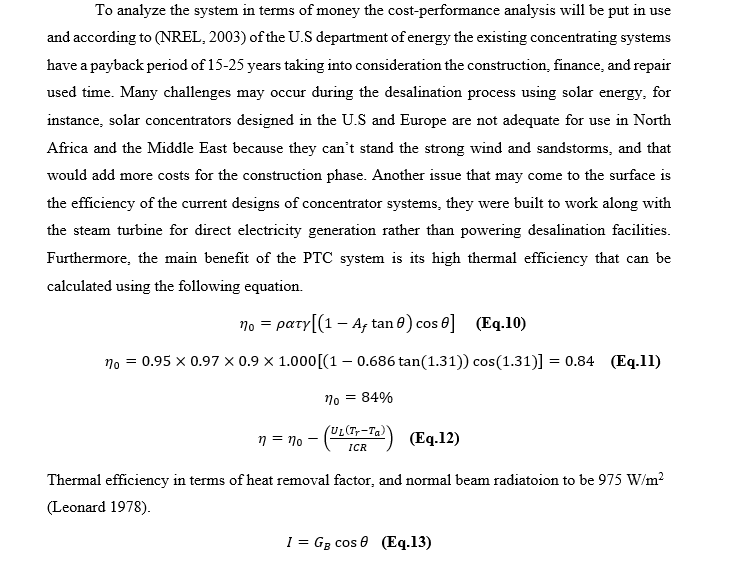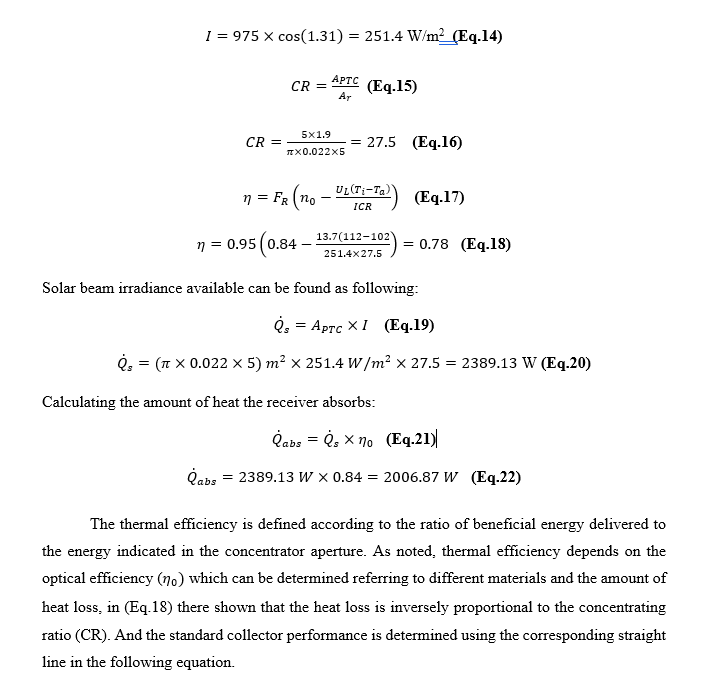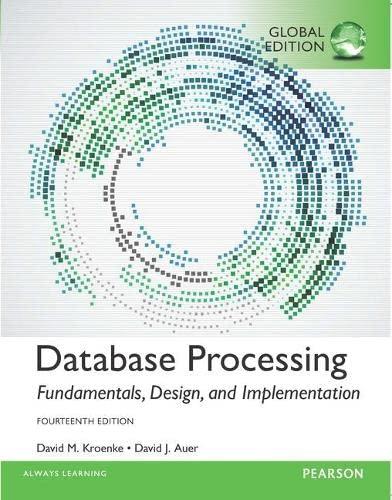can you put the equations in a python, matlab, or java. i will enter the numbers and the console should give me the answers and provide with a graph for the last two equations, Thanks!


To analyze the system in terms of money the cost-performance analysis will be put in use and according to (NREL, 2003) of the U.S department of energy the existing concentrating systems have a payback period of 15-25 years taking into consideration the construction, finance, and repair used time. Many challenges may occur during the desalination process using solar energy, for instance, solar concentrators designed in the US and Europe are not adequate for use in North Africa and the Middle East because they can't stand the strong wind and sandstorms, and that would add more costs for the construction phase. Another issue that may come to the surface is the efficiency of the current designs of concentrator systems, they were built to work along with the steam turbine for direct electricity generation rather than powering desalination facilities. Furthermore, the main benefit of the PTC system is its high thermal efficiency that can be calculated using the following equation. no = paty[(1 A, tan e) cos ] (Eq.10) no = 0.95 x 0.97 x 0.9 X 1.000[(1 0.686 tan(1.31)) cos(1.31)] = 0.84 (Eq.11) no = 84% (UL (Tr-Ta) = ' - (O2SCTE (Eq.12) Thermal efficiency in terms of heat removal factor, and normal beam radiatoion to be 975 W/m2 (Leonard 1978). I = Gg cos 8 (Ed.13) I = 975 x cos(1.31) = 251.4 W/m(Eq.14) CR= APTC (Eq.15) Ar 5x1.9 CR = TIX0.022x5 = 27.5 (Eq.16) n = FR no UL(Ti-Ta ICR (Eq.17) n = 0.95 (0.8 0.84 13.7(112-102 251.4x 27.5 = 0.78 (Eq.18) Solar beam irradiance available can be found as following: 0s = Aptc XI (Eq.19) es = (x 0.022 x 5) m x 251.4 W/m2 x 27.5 = 2389.13 W (Eq.20) Calculating the amount of heat the receiver absorbs: labs = 0, x n. (Eq.21) eads = 2389.13 W X 0.84 = 2006.87 W (Eq.22) The thermal efficiency is defined according to the ratio of beneficial energy delivered to the energy indicated in the concentrator aperture. As noted, thermal efficiency depends on the optical efficiency (no) which can be determined referring to different materials and the amount of heat loss, in (Eq.18) there shown that the heat loss is inversely proportional to the concentrating ratio (CR). And the standard collector performance is determined using the corresponding straight line in the following equation. To analyze the system in terms of money the cost-performance analysis will be put in use and according to (NREL, 2003) of the U.S department of energy the existing concentrating systems have a payback period of 15-25 years taking into consideration the construction, finance, and repair used time. Many challenges may occur during the desalination process using solar energy, for instance, solar concentrators designed in the US and Europe are not adequate for use in North Africa and the Middle East because they can't stand the strong wind and sandstorms, and that would add more costs for the construction phase. Another issue that may come to the surface is the efficiency of the current designs of concentrator systems, they were built to work along with the steam turbine for direct electricity generation rather than powering desalination facilities. Furthermore, the main benefit of the PTC system is its high thermal efficiency that can be calculated using the following equation. no = paty[(1 A, tan e) cos ] (Eq.10) no = 0.95 x 0.97 x 0.9 X 1.000[(1 0.686 tan(1.31)) cos(1.31)] = 0.84 (Eq.11) no = 84% (UL (Tr-Ta) = ' - (O2SCTE (Eq.12) Thermal efficiency in terms of heat removal factor, and normal beam radiatoion to be 975 W/m2 (Leonard 1978). I = Gg cos 8 (Ed.13) I = 975 x cos(1.31) = 251.4 W/m(Eq.14) CR= APTC (Eq.15) Ar 5x1.9 CR = TIX0.022x5 = 27.5 (Eq.16) n = FR no UL(Ti-Ta ICR (Eq.17) n = 0.95 (0.8 0.84 13.7(112-102 251.4x 27.5 = 0.78 (Eq.18) Solar beam irradiance available can be found as following: 0s = Aptc XI (Eq.19) es = (x 0.022 x 5) m x 251.4 W/m2 x 27.5 = 2389.13 W (Eq.20) Calculating the amount of heat the receiver absorbs: labs = 0, x n. (Eq.21) eads = 2389.13 W X 0.84 = 2006.87 W (Eq.22) The thermal efficiency is defined according to the ratio of beneficial energy delivered to the energy indicated in the concentrator aperture. As noted, thermal efficiency depends on the optical efficiency (no) which can be determined referring to different materials and the amount of heat loss, in (Eq.18) there shown that the heat loss is inversely proportional to the concentrating ratio (CR). And the standard collector performance is determined using the corresponding straight line in the following equation








